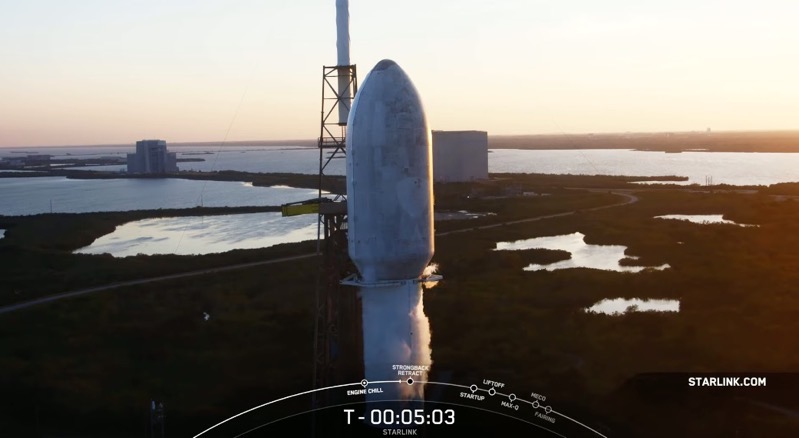
SpaceX Launches First Batch of Starlink ‘V2 Mini’ Satellites [VIDEO]

SpaceX today launched its first batch of Starlink ‘V2 Mini’ satellites into low-Earth orbit, the next generation of its internet satellites, that offer 400% more capacity than previous iterations of its Starlinks.
At 6:13 p.m. ET (23:13 UTC), Falcon 9 launched 21 second-generation Starlink satellites to low-Earth orbit from Space Launch Complex 40 (SLC-40) at Cape Canaveral Space Force Station in Florida.
This Falcon 9 booster was on its third launch, previously supporting missions CRS-26 and OneWeb Launch 16. The booster successfully landed on the A Shortfall of Gravitas droneship stationed in the Atlantic Ocean.
The company said these V2 Starlink satellites are larger and made to be launched by the Starship rocket system, but these ones have been modified into “minis” to fit the faring on Falcon 9 rockets.
These V2 Mini satellites will offer more bandwidth to offer increased reliability for people around the world. These new satellites also are the first to use argon hall thrusters in space. “Developed by SpaceX engineers, they have 2.4x the thrust and 1.5x the specific impulse of our first gen thrusters. This will also be the first time ever that argon Hall thrusters are operated in space,” said SpaceX yesterday.
SpaceX said this was the 174th successful landing of an orbital class rocket.
According to Ars Technica’s Eric Berger, this was the 100th consecutive booster landing by SpaceX.
For perspective: There is no rocket active today, aside from the Falcon 9, that has 100 consecutive successful launches. Let alone landings.
— Eric Berger (@SciGuySpace) February 27, 2023
Starlink is now available in 49 countries and territories worldwide, with Rwanda being the latest addition to go line.
Check out the full replay of today’s Starlink V2 Mini launch below:


